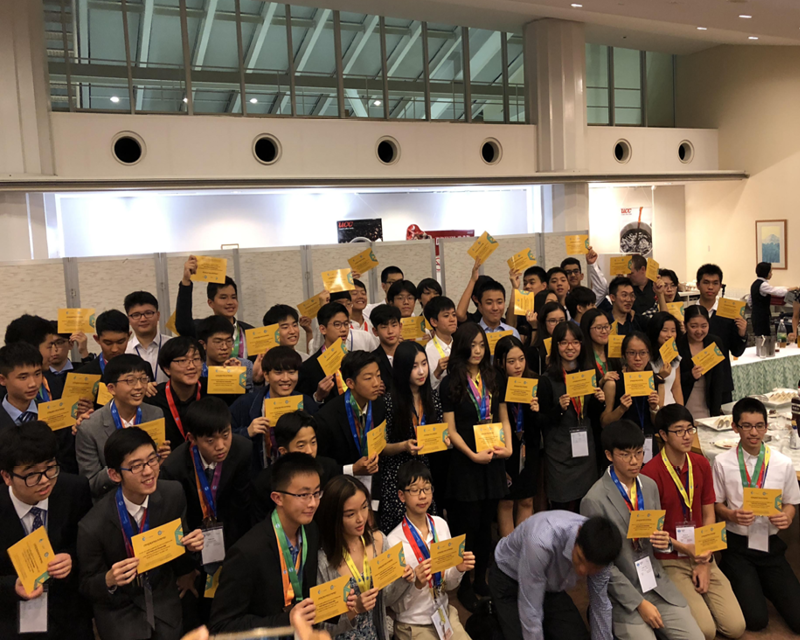The annual North East Asian Mathematics Competition (NEAMC), first organized in 2014, was held in Tokyo from Oct. 6-8. 12 students from the 10th to 12th grade—Brandon Oh (12), Jio Jeong (12), Brian Lee (12), William Seo (12), Paul Kim (11), Unnseo Park (11), Edward Hahm (10), Andrew Cho (10), Jiwon Lee (10), Brian Ham (10), Jinha Kim (10), and Thomas Song (10)—were selected to partake in the event. The participating students were divided into four distinct teams with three students in each team, and team members held weekly practice sessions together during office hours or activity period to hone both their mathematical and cooperation skills in preparation for the competition.
“My NEAMC team members were Jiwon and Unnseo,” Paul Kim (11) said. “Because we had conflicting schedules, we could only meet during Wednesday office hours to practice together. During the practice sessions, we went over competition material from previous years, as well as memorizing key formulas like Heron’s formula, the hockey stick formula, and the shoelace formula. Even though we only had 30 minutes a week to work together, these meetings really helped us understand the strengths and weaknesses of each team member, and how to divide and solve the competition problems according to them.”
The NEAMC consists of nine rounds: the mathematician, duel, codebreaker, shuttle, pursuit, inspiration, lightning, innovation, and open. Set up to assess the five distinct skill categories of knowledge, strategy, creativity, challenge, and collaboration, the rounds involve students demonstrating these essential abilities in performing mathematics. While three of the rounds are done individually, the remaining six are done in school teams and “buddy teams,” which are randomly selected groups of students from different schools. Since most of the rounds required cooperation with other competitors, it was especially crucial for students this year to learn to accept their technical shortcomings and understand the value of listening to the ideas and opinions of other team members.
“This was my first year at NEAMC, so I was quite nervous about the trip,” Jinha Kim (10) said. “I was especially nervous about the buddy team rounds, because I didn’t know who would be on my team until I was actually at the competition. In the end, my buddy team turned out to be great, and I made a few new friends at the event. I also saw some students that I had seen at different math competitions in previous years.”
Once the students had competed in all the nine rounds, the resulting scores were added together. The top 18 scorers in each of the five assessed categories were awarded medals, with the first six being awarded gold medals, the next six silver medals, and the remaining six bronze medals. SIS won a total of 17 gold, 8 silver, and 12 bronze medals, and 4 SIS students – Thomas Song, Brian Lee, Jiwon Lee, and Brian Ham – ranked in the top 9 competitors.
“I think that the competition was organized really well, and that it was a unique approach to math,” said Ms. Harman, NEAMC advisor. “It wasn’t just sitting down with a piece of paper and doing problems by yourself, instead, it incorporated team aspects and collaboration. The wide variety of approaches was also something new and fun.”
This year marks the sixth time that SIS students have participated in the NEAMC (the NEAMC was held twice in 2018). Over the years, SIS students who partook in the competition have not only been able to learn new mathematical concepts and ways to approach challenging questions, but have also learned the valuable skills of cooperation, creativity, and respect for fellow mathematicians. The NEAMC, with its cheerfully competitive environment, has become an event for interschool bonding over friendly rivalry as well as an experience through which students can discover their inner mathematical zeal.

